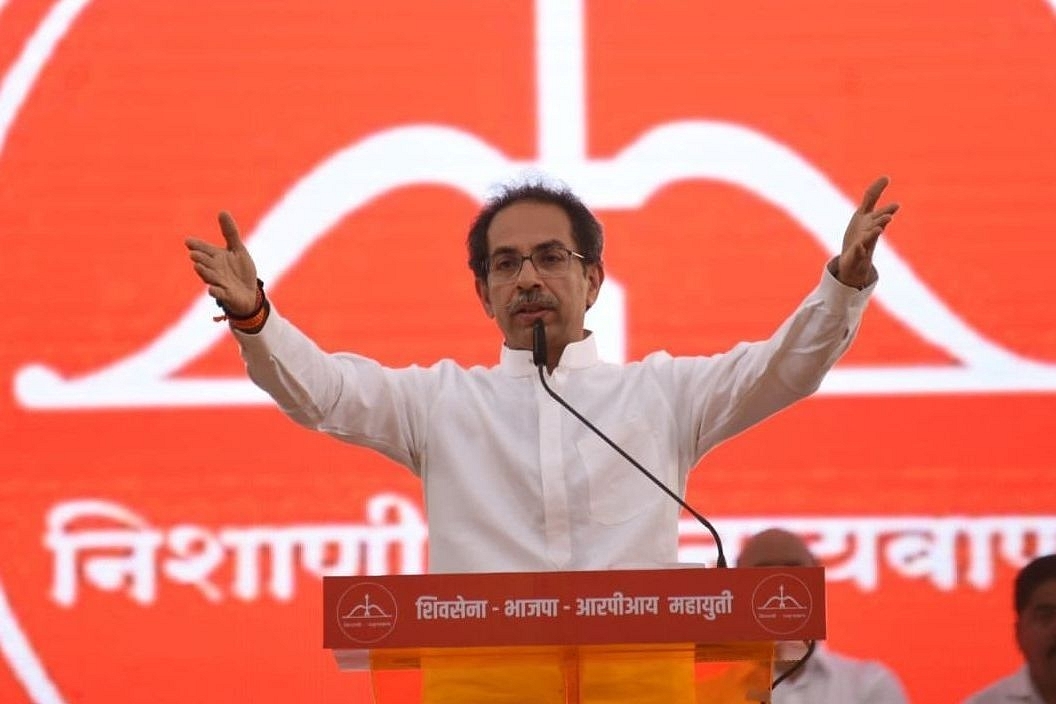Politics
Mumbai Doesn’t Need Separation From Maharashtra; It Needs To Be Freed From Sena’s Clutches
- What we need is not a separation of Mumbai from Maharashtra, but greater devolution of powers to the BMC and its elected officials.

Maharashtra Chief Minister Uddhav Thackeray.
The speed with which the Brihanmumbai Municipal Corporation (BMC) moved to demolish some allegedly “illegal” construction work in actor Kangana Ranaut’s office in Pali Hill reeks of fascist efficiency. Within a couple of days, notices were served, the premises surveyed, and even as the Bombay High Court was being petitioned for a stay, bulldozers had done their job.
But even the court said the BMC’s action “smacks of malafide”, the Shiv Sena alleged that Ranaut’s outburst, comparing Mumbai to Pakistan-occupied Kashmir (PoK), was a ploy to separate Mumbai from Maharashtra.
This is rich, rich.
Two of the three parties that are now part of the ruling Maharashtra coalition have been in power in the state for all but 10 years since Independence. Never once did they indicate that Mumbai needed to be split from the state. Mumbai itself has been ruled by the Shiv Sena for decades, and the city (along with Thane) is its political power base.
The Sena has been part of two coalitions with the BJP, one in the 1990s, and another during 2014-19, and never once has the idea of separating Mumbai from Maharashtra been broached by either partner. So, to believe that Kangana Ranaut is scheming with the Bharatiya Janata Party (BJP) to ensure this separation is nonsense.
The real problem is that Mumbai has never been run for the benefit of its citizens, and the Shiv Sena is the main reason for the gradual deterioration in the city’s quality of life. India’s biggest slums (Dharavi, Golibar, etc) exist here, and public transport is abysmal. If the Sena really loved the city so much, and especially when it did not have other conflicting rural political interests to cater to, it could have made Mumbai more livable, to say the least.
It is interesting to note that the Shiv Sena holds the Urban Development portfolio through Eknath Shinde, a legislator from Thane, another city that the Sena controls.
Put simply, Mumbai, which was always under the Sena’s thumb, is even more so today. It is controlled both at the city and state government end by the same party.
When the Sena came under criticism for the vindictive action of the BMC in demolishing Ranaut’s office premises, party spokespersons claimed no knowledge of the BMC’s plans. But here’s the truth: power in the BMC is wielded by the municipal commissioner, and not the elected mayor, and given the Sena’s control of the Urban portfolio, the decision to demolish Ranaut’s office could not have come without the knowledge or instigation of the Sena.
Two conclusions follow from this.
First, since the Sena runs both the BMC and the Urban Development Ministry, it is directly responsible for what happened in the demolition drive. And since illegal constructions continue to mushroom in Mumbai, it is equally responsible for Ranaut’s alleged illegal constructions, assuming that is what is the case. It did nothing about these illegalities when Ranaut was not criticising the government.
Second, the Sena’s street-thug tactics have now been mainstreamed, and this does not augur well for Mumbai or other cities controlled by the Sena.
What we need is not a separation of Mumbai from Maharashtra, but greater devolution of powers to the BMC and its elected officials. Unfortunately, the Sena, is too short-sighted to see that the two cities it controls, Mumbai and Thane, would be the biggest beneficiaries of any devolution of power downwards.
To repeat: Mumbai does not need separation from Maharashtra; it needs independence from the Shiv Sena’s grubby hands.
Support Swarajya's 50 Ground Reports Project & Sponsor A Story
Every general election Swarajya does a 50 ground reports project.
Aimed only at serious readers and those who appreciate the nuances of political undercurrents, the project provides a sense of India's electoral landscape. As you know, these reports are produced after considerable investment of travel, time and effort on the ground.
This time too we've kicked off the project in style and have covered over 30 constituencies already. If you're someone who appreciates such work and have enjoyed our coverage please consider sponsoring a ground report for just Rs 2999 to Rs 19,999 - it goes a long way in helping us produce more quality reportage.
You can also back this project by becoming a subscriber for as little as Rs 999 - so do click on this links and choose a plan that suits you and back us.
Click below to contribute.
Latest